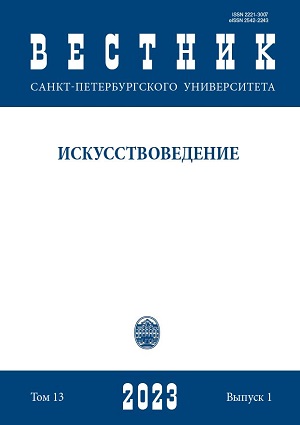The Pragmatics of Romanticism. Edmund Burke as Art Theorist
DOI:
https://doi.org/10.21638/spbu15.2023.110Аннотация
The article is devoted to the pragmatic aspects of Edmund Burke’s theory of art. The author identifies pragmatic components in the works of the British philosopher of various genres. The emphasis is on the interdisciplinary nature of Burke’s theory of art, which included artistic, psychological and political dimensions. The pragmatic dimension of Burke’s thought opens up a new field of research in the field of romantic aesthetics and art theory. The pragmatic romanticism of the British thinker complements our ideas about classical and modern art. His ideas shed new light on the development of Western European art from Baroque and classicism to avant-garde and postmodernism. At the same time, the problems of aesthetics, as well as the problems of power, are considered by Burke in a “psychoanalytic” and semiotic way, that is, without evaluation, and romantic special effects are subjected to objective analysis both in literature and art, and in politics. The pragmatic dimension allows us to redefine the role of Burke as the true founder of scientific art studies, who anticipated the most modern methods of analyzing artistic processes. The physiological, natural-scientific connotations of Burke’s work are also studied in the context of pragmatic strategies, as opposed to idealistic interpretations of the romantic theory of art.
Ключевые слова:
Edmund Burke, pragmatism, romanticism, modernism, theory of art, aesthetics, category of the sublime
Скачивания
Библиографические ссылки
Загрузки
Опубликован
Как цитировать
Выпуск
Раздел
Лицензия
Статьи журнала «Вестник Санкт-Петербургского университета. Искусствоведение» находятся в открытом доступе и распространяются в соответствии с условиями Лицензионного Договора с Санкт-Петербургским государственным университетом, который бесплатно предоставляет авторам неограниченное распространение и самостоятельное архивирование.






